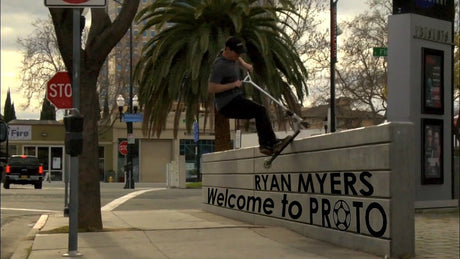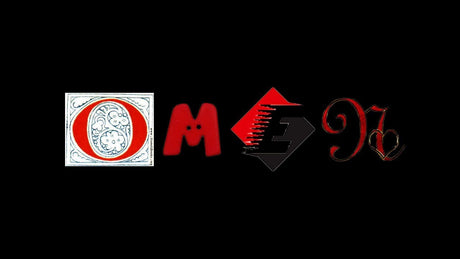
Video Review: Ryan Myers - Welcome to PROTO
Ryan Myers has been a staunch supporter of Proto parts for years, and with this video his official welcome to the roster is set in stone. I’ve known Ryan since...

Ryan Myers has been a staunch supporter of Proto parts for years, and with this video his official welcome to the roster is set in stone. I’ve known Ryan since...

“OMEN” is SoCal up-and-comer Nathan Treloar’s latest self-described “passion project.” Nathan’s ascension in recognition within the scooter community seems to be a relatively recent happening, but is nonetheless fully merited...

IN OUR NATURE is Native’s latest full-length offering to the scooter community. Featuring sections from nearly everyone on the roster, it should be surprising to no one that this film presents...

Pol Roman’s “Signature deck promo” commemorates the Spanish tech-savant’s years of persistence, dedication and mind-bending maneuvers in artfully inspired fashion. Pol is, in so many ways, on a frontier of...

A genuine feeling of surprise isn’t something I often find myself experiencing when watching a scooter video, this one being the particularly noteworthy exception. Jacob Kloes is an all-terrain talent...

Lorem ipsum dolor sit amet, consectetur adipiscing elit. Integer nec dolor rhoncus, luctus magna vitae, ultricies sem. Vestibulum vel sapien id neque maximus dapibus nec sed velit. Mauris at nulla...

Preface: VOLK is an apparel company and crew from Southern California composed of Wyatt Soto, Dom Dimatteo, Devin Pelphrey, Sam Hetherington, and Austin McCaine. The majority of the riders live...

As a mode of individual expression, the act of scootering is itself ideally situated to reflect the personalities, insights and eccentricities of its actors. Scootering is what those who perform...

Mokovel has put out a number of similar “MOKOVEL SESSION” videos over the course of the past year, but this one—for several reasons—stands out in particular. Jonathan Perroni is, to...

Dante Hutchinson officially rides for Ethic DTC, and was recently welcomed in this video, a compilation of street and skatepark riding documented across several countries. The riding component of this...